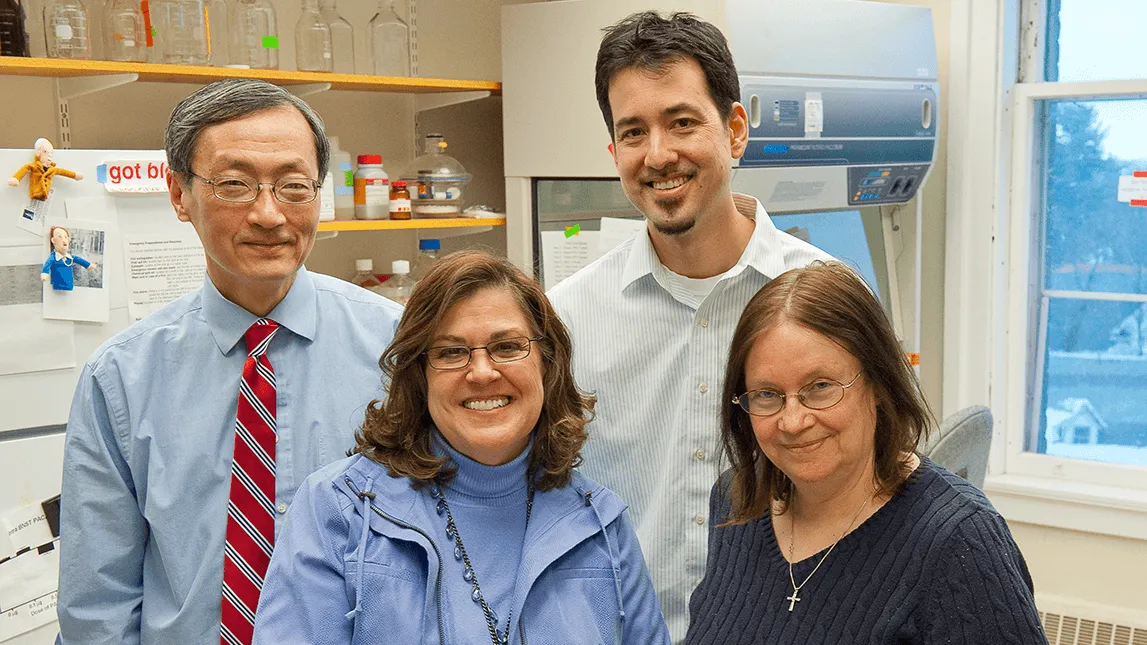Professors Sayamwong Hammack and Victor May began as busmates. And soon their conversations on the commute sprouted into a research partnership.
Hammack and May have been studying an increasingly popular molecule in the realm of neuroscience and psychology called pituitary adenylate cyclase activating peptide — PACAP for short. The molecule has been found to impact the stress and anxiety circuits that run in our brains.
But the extent of its importance only came to light when Hammack and May teamed up.
Hammack had been studying an area of the brain associated with stress and anxiety. May, on the other hand, had been researching PACAP.
“I came here ultimately to set up my lab to study those brain regions that are important for anxiety,” said Hammack, who teaches courses on neuroscience and psychopharmacology. “That was really what I was mostly interested in, with the intent of, if you understand those systems, perhaps, certainly you could develop drugs or things that might help.”
PACAP was present in the area of the brain Hammack studied. As he and May discussed their work, they wondered what the molecule was doing there.
“And ultimately, we did a bunch of experiments that worked out really beautifully to show that that molecule seems to me to have been involved in stress related anxiety,” Hammack said.
Later, while presenting some of their work, Hammack met a researcher working in Grady Memorial Hospital in Atlanta who had been looking at the genes of people with post-traumatic stress disorder. The researcher had found links between the disorder and PACAP, and the trio decided to collaborate. They found that a variation in the gene of the molecule appeared to promote susceptibility to PTSD, especially among women.
What does Hammack and May’s work mean for the future?
“The idea is that if you block the actions of PACAP at the PACAP receptor, you might be able to block anxiety behaviors and pain hypersensitivity,” said May, who teaches neuroscience and neurochemistry courses. “And maybe you might be able to block PTSD-like symptoms.”
For PACAP to trigger effects like anxiety, the molecule has to connect with a matching receptor, like a lock and key. But drugs could mimic the shape of PACAP, acting as a dummy and taking the real molecule’s spot — meaning the effect doesn’t happen. So the drug could block effects like “anxiety, chronic pain, which would include migraines and anxiety types of behavior,” May said.
To find out what those drugs could be, May from the neurological science department, and Hammack from the psychological science department, are collaborating with professors Mathias Brewer and Jianing Li in the chemistry department.

“(Brewer and Li) dock different compounds onto the receptor to see what are the molecules that could potentially block PACAP,” May said. “They synthesize those compounds, and they give me the compounds to test in my lab.”
Hammack and May are hopeful they can further figure out the relationship between stress and anxiety and PACAP, and that research will point to treatment for people.
